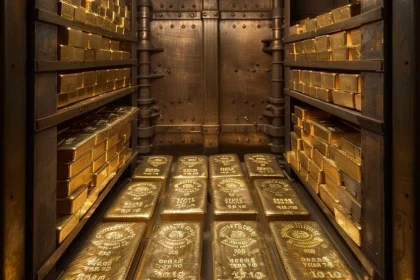When it comes to financial investments, people often think of stocks, real estate, or even precious metals like gold. Jewelry, however, is sometimes seen as a way to combine aesthetics with financial security. But before you rush to buy that diamond necklace or gold bracelet, it’s important to know that jewelry may not be as solid of an investment as it appears. While jewelry may hold sentimental value or even cultural significance, relying on it for financial returns can lead to disappointment. Here are five compelling reasons not to consider jewelry as a financial investment.
Jewelry’s value is highly subjective
At first glance, it might seem like jewelry — especially when made of precious metals and stones — would naturally appreciate over time. However, one of the biggest challenges in viewing jewelry as an investment is its highly subjective value.
While an heirloom ring may hold deep emotional significance for you, it’s unlikely to carry the same value for a buyer unless it’s tied to a significant historical event or celebrity ownership. The value of jewelry is often inflated by branding, craftsmanship and design — factors that don’t always translate into higher resale prices. Furthermore, appraisals often come in much higher than what you’ll actually get on the open market. The emotional allure of jewelry can blind you to its real, financial value, leading to disappointment when it doesn’t appreciate as much as you expect.
Resale value is almost always lower than the purchase price
The moment you leave the jewelry store with your shiny new piece, its value starts to decline. Jewelry — like cars — tends to depreciate as soon as it’s purchased. When buying jewelry, you’re paying for the retail markup, branding, craftsmanship and marketing costs, all of which inflate the purchase price far beyond the intrinsic value of the materials themselves.
When it comes time to sell, it’s rare to recover even a fraction of what you initially spent. Pawnshops, secondhand markets and even private buyers typically offer much lower than the original purchase price. The market is flooded with similar items, and unless the jewelry is exceptionally rare or has a notable history, its resale value won’t meet your expectations.
Market fluctuations and trends affect jewelry prices
The jewelry market is heavily influenced by trends, fashion and consumer preferences, which fluctuate over time. Unlike traditional financial investments like stocks or bonds that are typically evaluated based on measurable factors such as company performance or interest rates, jewelry’s value is often tied to fleeting fashion trends.
A style that’s popular today may lose its appeal in a few years, and with that decline in demand, the resale value of your jewelry can also drop. This unpredictability makes jewelry a volatile “investment.” When comparing this to more stable forms of investing, like real estate or even a diversified stock portfolio, jewelry’s value is far too uncertain to rely on for long-term financial growth.
Jewelry isn’t liquid and can be hard to sell
Liquidity is a key factor when it comes to making sound investments. Liquidity refers to how easily an asset can be converted into cash without affecting its market price. Unfortunately, jewelry isn’t a liquid asset. Selling jewelry is not as simple as trading stocks or withdrawing money from a bank. Finding a buyer who is willing to pay a fair price for your jewelry can take time, and in some cases, may never happen at all.
Pawnshops or consignment stores may offer quick cash, but often at a steep discount. And while online platforms have made it easier to sell secondhand goods, the process can still be lengthy and may not guarantee a good return. This lack of liquidity is a significant drawback for those looking to include jewelry as part of their financial investment strategy.
Maintenance and insurance costs diminish returns
One factor many people overlook when considering jewelry as an investment is the ongoing cost of ownership. Fine jewelry requires regular maintenance, whether it’s cleaning, repairs or periodic appraisals. Moreover, insuring valuable pieces can be expensive, and without insurance, you risk significant financial loss in the event of theft or damage.
These ongoing costs can eat into any potential returns you might hope to get from reselling your jewelry. Unlike traditional investments — where you can often “set it and forget it” — jewelry demands ongoing financial and time commitments, making it a less efficient investment vehicle.
Not a reliable financial asset
While jewelry can offer beauty, sentiment and even status, it’s not a solid choice for financial investment. The subjective nature of its value, depreciation upon purchase, the influence of market trends, lack of liquidity and ongoing maintenance costs all contribute to the reasons why jewelry shouldn’t be seen as a reliable financial asset. Instead of relying on jewelry to grow your wealth, consider investing in more stable options like stocks, bonds or real estate, which offer more predictable returns and less financial risk.
When considering your financial future, it’s essential to distinguish between what you love and what can provide actual returns. Jewelry may be an excellent purchase for personal enjoyment, but if you’re looking for a genuine investment, you might want to think twice before counting on it as part of your financial portfolio.
This story was created using AI technology.















